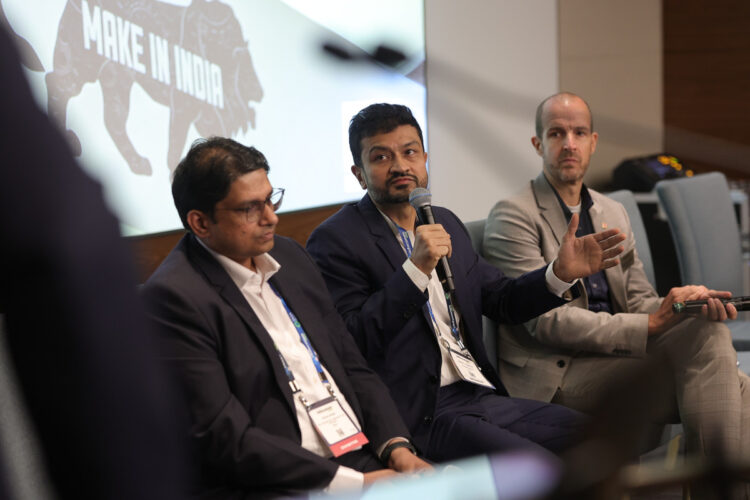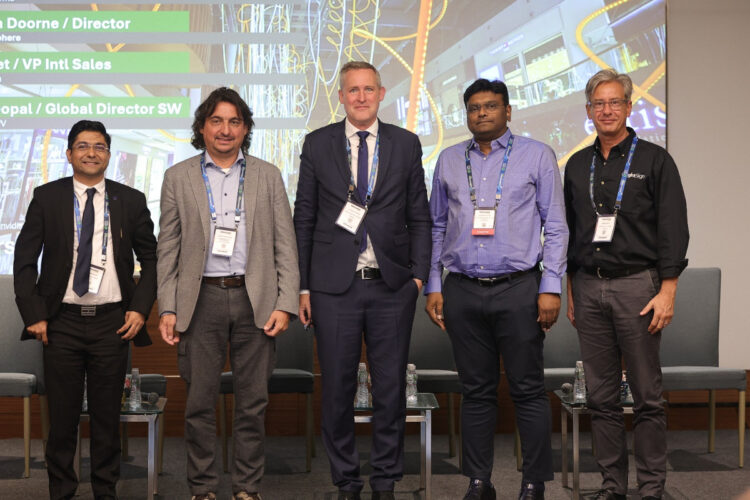Mumbai | With Foxconn and PPDS building major factories, a thriving software sector, and a 7% economic growth, India is becoming a key player in digital signage development. A recap of Infocomm India and invidis' digital signage conference.

Infocomm India: The Tiger Awakens
The exhibition hall at the JIO conference center in Mumbai is bustling with activity. This week, the subcontinent’s ProAV and digital signage industries gathered for the annual Infocomm India, a sister event of ISE. This tradeshow is where major international display providers like Samsung and PPDS (Philips) meet prominent local players such as Xtreme Media and Aero, who are increasingly expanding their presence abroad.
India’s ProAV and digital signage sector is thriving. For the first time, Infocomm India had to extend its exhibition space with a third hall. While hardware providers still dominate the showfloor, the software industry is not far behind: India’s Bangalore in India has turned into the silicon valley of the subcontinent. And more of India’s IT talents who have traditionally been seeking employment at Big Tech abroad are now staying in their own country. Many of the world’s leading digital signage CMS solutions, such as Scala, are already developed in India.
The Indian tiger vs. the Chinese dragon
The Indian government is strongly supporting the industry through initiatives like Make in India. Major display manufacturers are setting up production facilities in India to reduce reliance on China, driven by concerns over potential economic conflicts between China and the West. Politicians are backing the expansion of visual solution providers and IT manufacturers, with new plants producing screens and LEDs not only for the domestic market but increasingly for export to Europe. Only a few months ago, PPDS opened a facility in Mumbai to manufacture Philips Q-Line displays, a popular choice for digital signage.
Emerging digital signage trends: “Made in India” and open platforms
This sense that things are taking off is palpable at Infocomm India – both on the showfloor and at the digital signage conference that invidis held for the second time this year. Among the guests were two industry giants with Indian production facilities, Rekun Verma from TPV (PPDS) and Sanket Rambhia from Xtreme Media. Alongside Tobias Lang from Lang AG, who visited India to meet suppliers and integrators, they discussed India as up-and-coming production center in the APAC region in the panel “Made in India”.

Another panel discussed the role of B2B and consumer sensors in digital signage and the necessary connection via IoT hubs, SoC screens, and media players. One of the leading IoT platforms, JIO Platforms, was represented by Anand Bhandari. JIO Things already connects more than 20 million sensors – from digital signage to retail tech and building automation. All experts agreed that the future lies in vendor-independent, open platforms rather than closed systems.
The conference also addressed cyber security, emphasizing the need for IoT platforms and software to meet stringent security standards following recent global incidents. As a positive example, PPDS is set to receive updated IT security certifications for its software solutions.

Overall, the panels reflected the dynamic growth of the digital signage industry, with India emerging as a key hub. Discussions on open platforms, AI, IoT, and cybersecurity emphasized the need to rethink current structures and adopt new technological approaches. It was reaffirmed that the future lies in secure, provider-independent ecosystems that can function globally while meeting local market needs.
Here, the future of digital signage is shaped
India still lags behind many industrialized nations in economic development, as exemplified by the vast slums in Mumbai. Yet, Infocomm India once again showed that the country is also at the forefront of developing leading digital signage solutions for the global market. Despite economic disparities, India bears immense potential, particularly for the ProAV industry.
